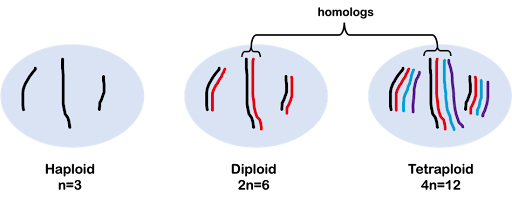Transparent graphics are a key part of modern design. These images have no background, so they blend into any layout. Transparent graphics work well for logos, product photos, and web elements. Using transparent graphics can make your designs look more professional. No matter if you're a beginner or expert, transparent graphics are important to learn. In this article, we'll dig in to the top 10 creative uses for transparent graphics. You'll find practical ideas and tips to use in your projects.
Transparent graphics are also called PNG files. They keep their clarity when placed over other images. This makes them perfect for many design needs. From websites to printed materials, transparent graphics add a clean look. Let's explore the many ways you can use transparent graphics to level up your work.

1. Eye-Catching Window Decals and Graphics
Window decals are a popular use for transparent graphics. Businesses use them for promotions and branding. Transparent graphics stick to glass without blocking the view. They look clean and professional from both inside and outside.
- Why they work well:
- They don't block natural light
- They look like part of the window
- They can be removed easily
- They work for temporary or permanent displays
For quality materials, check out Avery Dennison MPI 1060 Transparent film. This film is perfect for long-term window graphics.

2. Use Assembo.ai to Create Custom Backgrounds
Assembo.ai is a great tool for working with transparent graphics. It helps you create professional product photos. Upload your transparent PNG files and place them on different backgrounds. This saves time and money on photo shoots.
- How to use it:
- Upload your product image with transparent background
- Choose from various background options
- Adjust lighting and shadows
- Download your finished product photo
Try Assembo.ai to see how easy it is to create product photos. It's perfect for e-commerce and marketing materials.

3. Social Media Content and Stories
Transparent graphics make social media content stand out. They work well for Instagram stories, Facebook posts, and Pinterest pins. You can overlay text and graphics on photos without white boxes around them.
- Best practices:
- Use transparent PNGs for logos and icons
- Create custom stickers for stories
- Make branded overlays for videos
- Design profile pictures that blend with page colors
Find free transparent images on Freepik to start your designs. They offer many options for social media graphics.

4. Website Design Elements
Transparent graphics make websites look modern and clean. They help create depth and layering effects. Buttons, icons, and overlays work well with transparent backgrounds.
- Key uses:
- Navigation icons and buttons
- Image overlays with text
- Animated elements and hover effects
- Background patterns that don't clash with content
Using transparent graphics properly can improve user experience. They help guide attention to important content areas.

5. Product Packaging and Labels
Transparent graphics work well on packaging. They create a premium look and feel. Consumers can see the product while still seeing branding and information.
- Advantages:
- Shows product through packaging
- Creates sleek, modern appearance
- Allows for creative design options
- Works with various packaging materials
Quality materials like Avery Dennison's transparent films ensure your graphics look professional and last long.

6. Presentations and Reports
Transparent graphics make presentations look more professional. They help avoid the boxy look that comes with images with white backgrounds. Charts, diagrams, and logos blend seamlessly into slides.
- Tips for use:
- Use transparent PNGs for company logos
- Create custom icons and graphics
- Overlay text on images without background issues
- Make infographics that blend with slide designs
Tools like Canva Pro make it easy to create transparent graphics for presentations. They offer many templates and options.

7. Mobile App Interfaces
Transparent graphics are key in app design. They help create modern, intuitive interfaces. Buttons, icons, and overlays often use transparent backgrounds for better integration.
- Design benefits:
- Creates depth and layering
- Allows for see-through effects
- Helps with adaptive design across devices
- Improves user experience with clean visuals
Using transparent graphics properly can make your app look more polished. They help maintain consistency across different screen sizes and themes.

8. Email Marketing Designs
Transparent graphics make email designs look more professional. They help create visually appealing layouts that work across email clients. Logos, buttons, and decorative elements benefit from transparent backgrounds.
- Best practices:
- Use transparent PNGs for brand logos
- Create custom buttons and icons
- Design email headers that blend with content
- Ensure graphics work in dark mode emails
Testing your emails with transparent graphics is important. Some email clients may render them differently, so always check how they appear to recipients.

9. Printed Marketing Materials
Transparent graphics work well in print materials. Business cards, brochures, and flyers benefit from clean, professional-looking graphics. They allow for creative designs that stand out.
- Print considerations:
- Use high-resolution transparent PNGs
- Consider paper quality and transparency effects
- Work with printers who understand transparent graphics
- Test prints before large runs
Quality printing materials like Avery Dennison's films ensure your transparent graphics look sharp and professional in print.

10. Video Production and Editing
Transparent graphics are important in video production. They allow for overlays, lower thirds, and special effects. Logos, text, and graphics can be added to videos without blocking content.
- Video applications:
- Brand logos in video corners
- Text overlays and captions
- Animated graphics and effects
- Custom transitions and elements
Using transparent graphics in videos requires proper file formats. MOV with alpha channel or PNG sequences work best for maintaining transparency in video editing software.
Final Thoughts
Transparent graphics offer many creative possibilities. From web design to print materials, they help create professional-looking results. No matter if you're designing for digital or print, transparent graphics provide flexibility and clean aesthetics.
Remember that quality matters when working with transparent graphics. Use high-resolution files and proper formats for best results. Tools like Canva's transparent image maker can help create and edit transparent graphics easily.
Start experimenting with transparent graphics in your projects. They can level up your designs and make your work stand out. With practice, you'll find even more creative ways to use transparent graphics.
